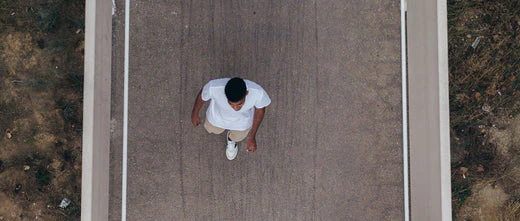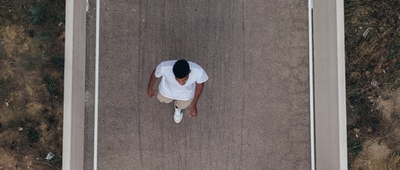Fastest Way to Dry Sneakers: Quick Tips You Need to Know


Table of Contents
- Introduction
- Understanding Materials and Avoiding Mistakes When Drying Sneaker
- First Steps to Rescue Your Sneakers After They Get Soaked
- The Best Methods for Fast Drying
- Can You Use Heat?
- Drying Sneakers in a Washing Machine: Yes or No?
- Common Drying Myths You Should Avoid
- Speeding Up Drying Time with Household Items
- How to Dry Sneakers Overnight
- How to Prevent Sneakers from Getting Wet in the First Place
-
Conclusion
1. Introduction
Wet sneakers are more than just a hassle—they can be a breeding ground for bacteria, smell bad, and even damage your favourite pair of shoes over time. Whether you got caught in a rainstorm or had an intense workout, drying your shoes quickly and properly is super important. The good news is, there are easy ways to dry your sneakers fast while keeping them in good shape. Let’s walk through how to do it.
Why Drying Sneakers Quickly Matters
Drying your sneakers fast isn’t just for comfort. The longer your shoes stay wet, the higher the chance of mold, bad smells, and weakened materials. Wet sneakers can start to stink because bacteria thrive in damp conditions. Plus, materials like leather and suede can shrink, warp, or get damaged if left wet for too long. So, drying them quickly not only keeps them smelling fresh, but it also helps them last longer by protecting their structure and materials.
Understanding the Materials of Your Sneakers
Sneakers are made from all kinds of materials, and each reacts differently to moisture. Mesh, canvas, leather, and synthetic materials all behave differently when wet, which is why knowing what your sneakers are made of is key to picking the right drying method. Mesh and canvas tend to dry faster, while leather and suede need more care to avoid cracking or discoloration. By understanding your shoes' materials, you can avoid unnecessary damage and make sure you’re using the best drying technique.
2. Understanding Materials and Avoiding Mistakes When Drying Sneakers
How Different Materials Affect Drying Time
- Mesh and Knit Uppers: These materials are light and breathable, allowing air to pass through easily, so they usually dry quicker than other materials. However, they can still harbor bacteria if not dried correctly.
- Leather and Suede: These are trickier to dry because they can get damaged easily. Leather can crack, and suede can discolor or become stiff if exposed to heat or moisture for too long.
- Rubber Soles: While rubber soles don’t soak up moisture, they can trap water in the upper part of the shoe, which slows down the drying process.
Common Mistakes When Drying Sneakers
One of the most common mistakes people make is thinking that more heat equals faster drying. However, too much heat can seriously harm your shoes, especially if they’re made of sensitive materials like leather or suede. Another mistake is not stuffing your shoes with something absorbent, like paper towels, which helps draw out moisture. And lastly, if you leave your sneakers in a damp place or delay drying them, it can lead to mildew and bad smells.
3. First Steps to Rescue Your Sneakers After They Get Soaked
Immediate Steps to Take After Getting Sneakers Wet
When your sneakers get soaked, quick action is important. Start by removing any excess water—shake out your shoes, wipe them down with a towel, and take out the insoles. This will help speed up the drying process. Avoid wearing wet sneakers as they can lose their shape and trap moisture inside, which will only make things worse.
Step by step
- Remove the laces and insoles: This helps with airflow and speeds up the drying process. Insoles hold a lot of moisture, so drying them separately will make the overall process faster.
- Shake out excess water: Get as much water out of the shoes as you can before you start drying them.
- Wipe down with a towel: Use a dry towel to soak up surface water and help speed up drying.
4. The Best Methods for Fast Drying
Using a Fan: How It Speeds Up Drying
One of the easiest and safest ways to dry sneakers is by placing them in front of a fan. The airflow helps evaporate moisture without the risk of heat damage. To get the best results, place your sneakers on their sides so more of the surface is exposed to the air.
Stuffing Sneakers with Paper Towels: Simple Yet Effective
Filling your shoes with crumpled paper towels or newspaper is a simple but highly effective way to absorb moisture from the inside. It helps draw out excess water, especially when combined with air drying or using a fan.
How a Shoe Dryer Works and Why It’s the Fastest Option
A shoe dryer is specifically designed to dry shoes quickly and evenly. It works by circulating warm air through the inside of the sneakers, significantly reducing drying time without risking overheating. If you frequently deal with wet sneakers, it might be worth investing in a shoe dryer.
The Sock Trick: Absorbing Moisture from the Inside Out
Here’s a clever little trick: fill a sock with uncooked rice or cat litter, then place it inside the wet sneaker. Both materials are great at absorbing moisture, helping to dry the shoes from the inside out without using any heat that could harm the materials.
5. Can You Use Heat?
Pros and Cons of Using a Hair Dryer
While using a hair dryer can speed up the drying process, it comes with risks if not done properly. Too much heat can cause materials to shrink, warp, or crack. If you decide to use a hair dryer, stick to the cool or low-heat setting, and keep the airflow moving so that you don’t concentrate heat in one area.
Safe Heat Application: Avoiding Damage to Your Sneakers
If you’re going to apply heat, always go with a low setting, and keep the dryer or heat source at a safe distance from the shoes. Rotate the sneakers regularly to ensure even drying, and never aim heat directly at delicate areas like the upper part of the shoe or the stitching.
Why Direct Sunlight Isn’t Always a Good Idea
It might seem like leaving your shoes in the sun is a quick fix, but direct sunlight can cause colors to fade and materials like leather or suede to crack. Prolonged exposure to UV rays can weaken fabric, so sunlight might not be the best option for drying your shoes.
6. Drying Sneakers in a Washing Machine: Yes or No?
When It’s Safe to Use a Washing Machine’s Spin Cycle
Using a washing machine’s spin cycle can help remove excess water, but it’s not suitable for every pair of sneakers. Leather, suede, or delicate sneakers should definitely avoid the washing machine, but synthetic and fabric sneakers might benefit from a gentle spin.
How to Protect Sneakers During a Machine Dry
If you decide to use a spin cycle, place your sneakers in a laundry bag or pillowcase to reduce impact damage. Use a low spin speed and avoid using heat. Afterward, always air-dry your sneakers, since dryers can be too harsh on them.
7. Common Drying Myths You Should Avoid
Why the Oven or Microwave Is a Big No-No
Never dry your sneakers in an oven or microwave. The high heat can warp the rubber soles, melt glue, or even cause the materials to catch fire. While it may seem convenient, these methods will likely ruin your shoes.
Do Dehumidifiers Help Dry Sneakers Faster?
A dehumidifier won’t directly dry your sneakers, but it can help speed up the process by lowering the moisture level in the air. Placing your sneakers in a small, enclosed space with a dehumidifier can create a more effective drying environment.
8. Speeding Up Drying Time with Household Items
Using Silica Gel Packets to Absorb Moisture
You know those little silica gel packets that come with new shoes or bags? They’re great for absorbing moisture. Toss a few into your wet sneakers, and they’ll help speed up the drying process, especially when combined with air drying.
Rice and Kitty Litter: Unconventional but Effective?
Filling your sneakers with rice or kitty litter is another unconventional but effective trick for drying them. Both are very absorbent and can help pull moisture out from inside the shoes, leaving them dry without damaging the material.
9. How to Dry Sneakers Overnight
Best Overnight Drying Methods
The best way to dry your sneakers overnight is by combining methods. Stuff them with paper towels or newspaper, set them near a fan, and leave them in a well-ventilated room. Avoid using any heat to prevent damage.
Tips for Keeping Sneakers Fresh While Drying
To keep your sneakers smelling fresh while they dry, you can use some baking soda or place a dryer sheet inside the shoes. These small steps can stop musty odors from forming overnight.
10. How to Prevent Sneakers from Getting Wet in the First Place
Waterproofing Sprays: A Lifesaver for Sneaker Lovers
Waterproofing sprays can be a game-changer. They create a protective barrier that keeps water from soaking into your shoes. Regularly applying a waterproof spray can help keep your sneakers dry, even in wet conditions.
Proper Maintenance to Keep Sneakers Dry Longer
Besides waterproofing, taking good care of your sneakers is essential. Regularly clean them, store them in a dry place, and avoid walking through puddles or muddy areas. These little habits will help keep your shoes dry and in good condition for a long time.
11. Conclusion
From using a fan to the trusty paper towel trick, there are many ways to dry your sneakers quickly without causing damage. The right method depends on what materials your sneakers are made of and how much time you have. By acting quickly, avoiding heat damage, and choosing the right drying method for your sneakers, you can keep them fresh and functional for a long time. Take care of your sneakers, and they’ll continue looking and feeling great, even after a downpour.












